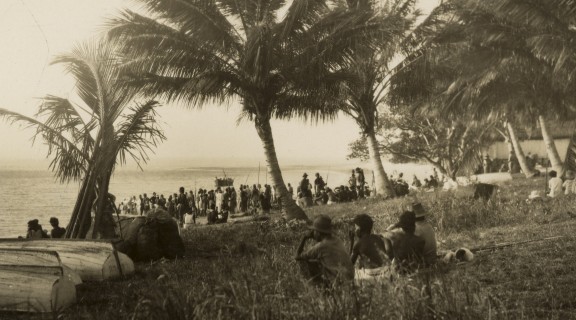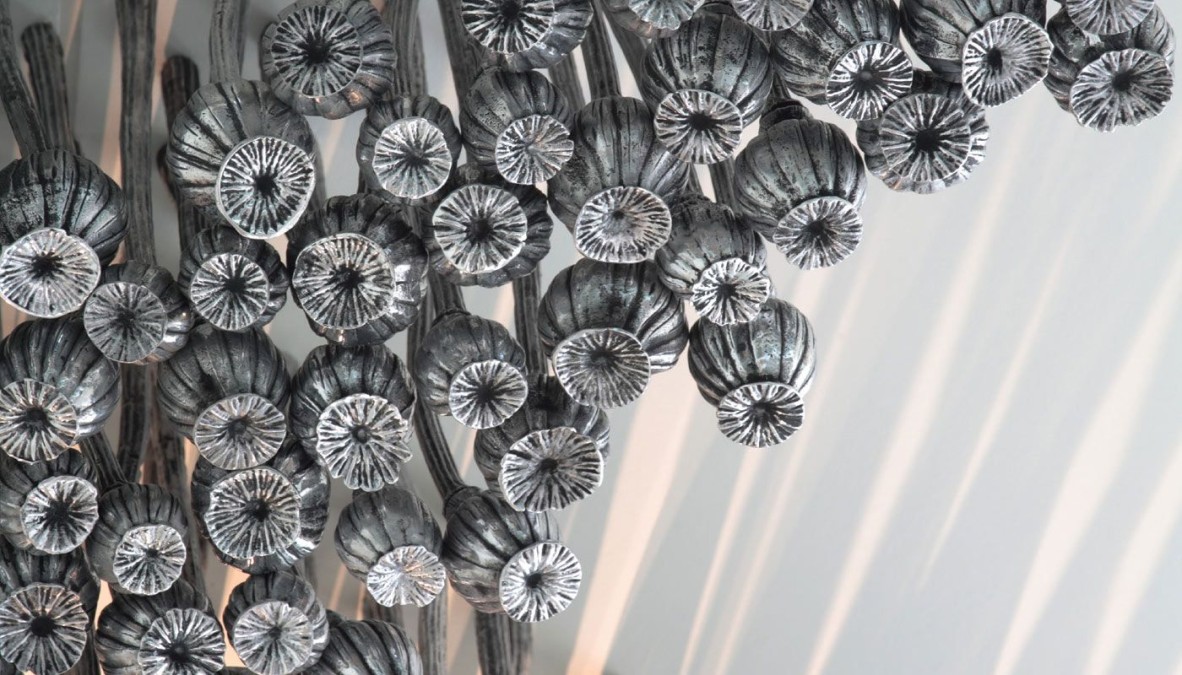
- Home
- Community history
/
Community history
Aboriginal and Torres Strait Islander peoples living in Queensland have a complex and diverse history that continues to this day. Various policies and legislative controls have had devastating effects on the lives of Aboriginal and Torres Strait Islander peoples and their communities. Sharing and understanding these histories helps pave the way for a shared future.

Fiona Foley's Black Opium installation on levels 4 and 5 of the State Library.
Queensland Legislation
Since colonisation, Aboriginal people and Torres Strait Islander people have been subject to a range of legislative and other forms of control. Prior to the separation of Queensland from New South Wales on 10 December 1859, the Native Police were the main instrument of colonial authority and order in relation to Aboriginal people on the mainland. Torres Strait Islander people initially came under the jurisdiction of the Police Magistrate on Thursday Island, and later, for a short time, the Government Resident. After separation the administration of Indigenous affairs was transferred to the Colonial Secretary's Office for Queensland and from 1896 the Home Secretary's Office, whose correspondence (in the form of letters received) is a valuable source of information.
Probably, one of the more infamous pieces of legislation introduced by the Queensland authorities was the Aboriginals Protection and Restriction of the Sale of Opium Act 1897 (Qld) This Act created the positions of Protectors of Aboriginals, and in 1904, the Office of the Chief Protector of Aboriginals.
The 1897 Act and the subsequent amending Acts of 1901, 1927, 1928 and 1934 gave the Chief Protector of Aboriginals, as well as the individual Protectors, enormous control over almost all aspects of the lives of Aboriginal and Torres Strait Islander people in Queensland. Vast quantities of records were created on the thousands of individuals who were subject to this legislation. This material contains invaluable information for family history researchers: there are files which document forced removals onto missions and reserves, applications requesting exemptions from the ‘Protection’ Act, and for permission to marry, employment and wages records, files about sickness, health and welfare, and deaths, and records about the management of the missions and reserves.
While the majority of these records have been transferred to the Queensland State Archives, because the files often include information of a personal and sensitive nature, access to them is managed by the Queensland Government’s Community and Personal Histories Team.
Read the brief history by Kathy Frankland to gain an overall understanding of the Government administration of Aboriginal and Torres Strait Islander people in Queensland.
Missions and Reserves
Prior to the introduction of the Aboriginals Protection and Restriction of the Sale of Opium Act 1897 (Qld.), a number of Aboriginal and Torres Strait Islander mission stations had been established by religious organisations in Queensland and small amounts of land throughout the State had been gazetted as reserves for the use of Aboriginal people. With the passing of the 1897 'Protection' Act, all Aboriginal reserves became subject to the Act. For a number of these reserves Superintendents were appointed to carry out the provisions of the Act. Missionaries in charge of Aboriginal settlements also became Superintendents.
The majority of Aboriginal reserves in Queensland were never "managed" reserves; that is no Superintendent was appointed. Unmanaged reserves were usually controlled by the Local Protector of Aborigines.
The Queensland Government provides an excellent resource detailing the histories of Queensland missions and reserves entitled Aboriginal and Torres Strait Islander community histories.
The following brief histories document provide researchers with information about the creation of missions and reserves in Queensland. This list includes locations which were home to many Aboriginal people but never formally gazetted as reserves. It has not been possible to establish the fate of many of these reserves. Some were formally de-gazetted while others simply fell into disuse.
Houses at Yarrabah Mission, Queensland, ca.1912. John Oxley Library